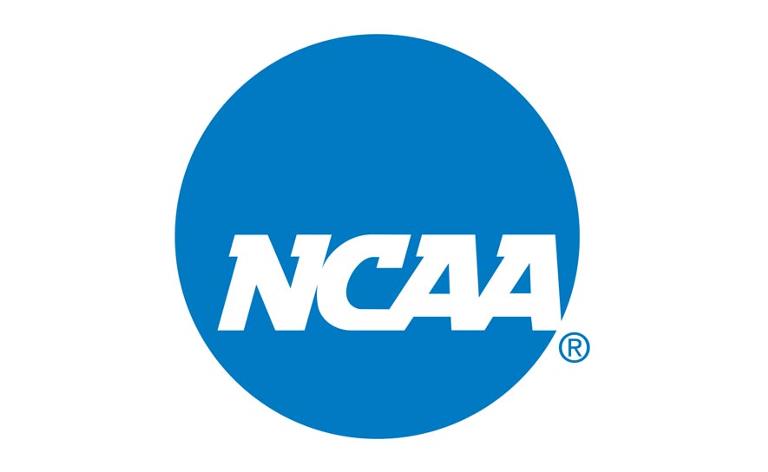Moore: NCAA? More like N-C-won’t-pay
NCAA [Public Domain], via Wikimedia Commons
The latest decision from the NCAA begins a step in the right direction—then stops before actually taking the step.
November 7, 2019
One of the biggest news items in college sports in the past week has been the National Collegiate Athletic Association’s (NCAA) “decision” to allow players to earn profit from their name, image and likeness. While allowing these benefits would be a wonderful change for college sports, this new ruling falls drastically short of achieving that lofty goal.
The debate on whether or not college athletes should be paid has raged for years. To this point, the NCAA has barred any compensation for student-athletes beyond the cost of attending college, mostly thanks to their long-held policy of amateurism. Since its inception, one of the NCAA’s primary responsibility has been maintaining amateurism in all facets of college athletics.
Though this policy may have been helpful in its early days, amateurism now holds back many promising student-athletes. There is really no reason these athletes should not be compensated for their efforts. Many student-athletes invest just as much time into their sport as professional athletes, on top of their academic studies, yet they get practically nothing in return. Moreover, most of them will never play their sport again after college, yet they are banned from taking any money from anyone or anything besides their scholarships. In most cases, this means they cannot even take other jobs (not that most have the time for them—sports can take as much or more time than a job). These athletes deserve to earn money from more than just their scholarships. Any other college student has all the opportunity in the world to earn an outside income, why should college athletes be treated differently?
In its Oct. 29 decision, the NCAA Board of Governors chose to open the door to allow players to earn some benefits. The change would allow them to profit from their name, image and likeness (NIL). The NCAA made this decision in reaction to legislative action from several state legislatures, most notably California. There, laws have been passed to allow players in the state to profit from any form of their NIL. The NCAA, more than anything, wants any rules to be standard across the country, so they have made this decision with the goal of preventing further prodding from governments. This sounds like a positive step. Athletes should soon be able to make some much-deserved money.
However, that isn’t the whole story.
What this decision doesn’t actually accomplish yet is the necessary rule changes to allow players to reap the fruits of their labor. So far, the Board has only directed the NCAA’s divisions to explore the possible bylaw changes needed to enact change. Generally speaking, this is a sound decision. The differences in financial aid between divisions are already complex, and any NIL rules implemented across the board would naturally fall short ineffectiveness.
For example, Division I University of Alabama and Division III Mississippi University for Women operate under radically different scholarship rules now, and to expect them to operate under similar NIL restrictions would be ludicrous. That said, it’s important to remember that this is the limit of the “rule changes” so far. No bylaws have yet been changed, and the recommendations from the Board are just that—recommendations. So what does it actually recommend?
The primary goal of the Board’s decision is to maintain a balance between payment for the player’s NIL and payment for athletic participation in order to differentiate college and professional sports. They want any benefits to be tethered to education and desire regulations that “promote student-athlete well-being and educational achievement.” Specific examples of legal enterprises include the use of the student’s NIL to promote their own legitimate commercial activity or a nonprofit and the use of social media for promotion. Fine examples but just a fraction of what these students could be earning from.
Admittedly, the specific language of the decision does not bar the possibility of other revenue sources. In fact, at one point, the board states that the framework it aims to review includes the students lending their NIL to an employer. However, the specific omission of any examples including sponsorship seems to indicate that may not fit the NCAA’s plans. Frankly, I think that’s insane.
I think more appropriate action would be to clearly open the floor for outside sources to offer players compensation. It could be Nike seeking an endorsement from the Heisman Trophy winner or the car dealership down the street sponsoring the local basketball star. Either way, these would offer much more viable sources of revenue to college players at all levels. I don’t believe that allowing this threatens the idea of amateurism at all. There’s a difference between being paid by a team to play a sport and being paid by someone else because you play a sport, and the latter still fits within amateurism. This would be a simple answer that would at least give players an opportunity to earn some revenue.
Another possible solution to this would be simply forgoing any idea of amateurism. Just pay the players for sports like it’s their job (which, in many cases, it effectively is). This may be a more radical change, but at this point, college sports have a huge reach and audiences nearing the sizes of their professional counterparts. This could be implemented in a couple of different ways.
The colleges themselves could pay players; however, I think this may not be the right move either. Giving colleges responsibility to colleges to pay players could have a few negative effects. For starters, this would turn colleges into sports companies—well, those that aren’t already effectively sports companies—and would burden the taxpayers with paying every college athlete at a state university. Even in small states, this could number in the thousands, and that could easily be several tens of thousands of athletes that have to be paid. In addition, this would further ingrain competitive disparity in college athletics. The biggest, most successful colleges already have an edge in recruiting over other schools thanks to their higher name recognition and more funds. Leaving player payment to the individual schools would just send the best recruits to whoever could pay them the most, which would nearly always be the already established, big-name schools.
To avoid these negative outcomes, another option does exist: rather than schools paying their players, have the NCAA itself distribute salaries. Though it is a non-profit organization, the NCAA earns millions of dollars per year from sponsors, media rights, championship tournaments and its own member schools. It uses these funds to support its initiatives but also disperses some to its member institutions. Rather than returning the money to the schools, the NCAA could define salaries and distribute themselves, eliminating financial competition between schools. To be sure, this may be a challenge for the NCAA to actually accomplish; collecting enough money to provide more than 500,000 salaries would even be near impossible, and all other programs the NCAA funds would likely be canceled. But hey, the players get their money, right?
Certainly, no great solution exists. I personally support the first solution (giving players free reign to accept money from outside sources), but there can be drawbacks even here. In this case, schools with the biggest connections will inevitably draw the biggest talent, and these schools usually end up being the same schools that are already established powerhouses. The best get better, and the worst stay bad. Rinse and repeat, ad infinitum.
As it stands, the only thing student-athletes can earn from their athletic services is an education, one that is often lower quality than their non-athletic counterparts (check out the fake classes scandal at the University of North Carolina, it’s wild). While this demonstrates a deeper issue with college sports culture, it’s not one that the NCAA can solve as easily. The NCAA has had plentiful options to allow players to benefit financially from their labor, all with their pros and cons. Instead, they released this decision that may not end up changing anything at all for these student-athletes. While there’s plenty of hype around this new decision, I wouldn’t get my hopes up for anything to change any time soon.











Greg Lambert • Nov 13, 2019 at 10:40 pm
This writer nailed it. Impeccable. So well spoken and articulate in his delivery.